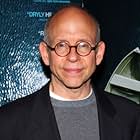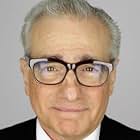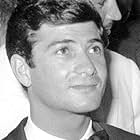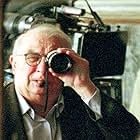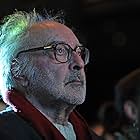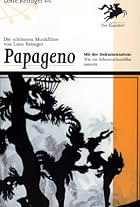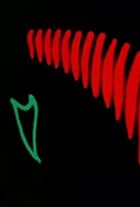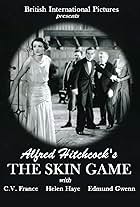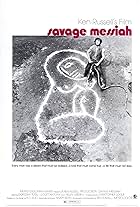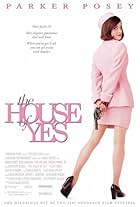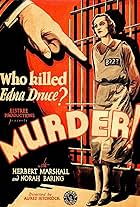IMDb RATING
7.3/10
7.3K
YOUR RATING
Filmmakers discuss how Francois Truffaut's 1966 book "Cinema According to Hitchcock" influenced their work.Filmmakers discuss how Francois Truffaut's 1966 book "Cinema According to Hitchcock" influenced their work.Filmmakers discuss how Francois Truffaut's 1966 book "Cinema According to Hitchcock" influenced their work.
- Awards
- 1 win & 1 nomination
Bob Balaban
- Narrator
- (voice)
Jean-Claude Brialy
- Self
- (archive footage)
- (uncredited)
Claude Chabrol
- Self
- (archive footage)
- (uncredited)
Jean-Luc Godard
- Self
- (archive footage)
- (uncredited)
Alfred Hitchcock
- Self
- (archive footage)
- (uncredited)
Vera Miles
- Self
- (archive footage)
- (uncredited)
Anny Ondra
- Self
- (archive footage)
- (uncredited)
Alma Reville
- Self
- (archive footage)
- (uncredited)
- Director
- Writers
- All cast & crew
- Production, box office & more at IMDbPro
Storyline
Did you know
- TriviaBoth Sir Alfred Hitchcock and François Truffaut could actually speak quite adequately in the language of the other, as can be heard in off camera moments. However neither felt confident enough, so they used Helen Scott, a bilingual Truffaut collaborator, to provide simultaneous translation.
- Quotes
Alfred Hitchcock: Silent pictures are the pure motion picture form. There's no need to abandon the technique of the pure motion picture, the way it was abandoned when sound came in.
- ConnectionsFeatures The Lodger: A Story of the London Fog (1927)
Featured review
Not the usual kind of biographical stuff about the celebrity's childhood and how he "rose to prominence" before he "fell from grace." In other words it's not an episode of "Biography." The object of attention is the book, "Cinema According to Hitchcock" by an admirer and fellow director Francois Truffaut, published in 1966.
The film is roughly (but only roughly) chronological and the biographical material is limited but covers both Hitchcock and his interviewer. What makes it more interesting than it might be is that Truffaut was about half Hitchcock's age. They came from different traditions -- Hitch from the silents, when everything needed to be spelled out visually, and Truffaut from the French "New Wave" cinema of the early 1960s, when the rules were thrown out the window.
Despite their different styles, they never clash. Truffaut is too good natured for that, and Hitch too distantly polite in his British way. Only once, in the book, not in the film, is there any sign of friction, when Truffaut suggests a different way Hitch might have handled a scene and he replies, "It seems you want me to write for an art house audience." Lots of excerpts from Hitch's movies and several from Truffaut's as well. A good deal of attention is paid to cinematic techniques -- the position of the camera, the lighting, the pattern of the images themselves. Some of the talking heads, and Hitchcock himself, come up with implications that to me seem questionable. I can't manage to convince myself that, while waiting for Kim Novack to emerge fully transformed from the bathroom, Jimmy Stewart is "getting an erection." In fact, I can't imagine Jimmy Stewart getting an erection at all.
I suspect the program might disappoint some viewers who don't want to listen to the interlocutors making polite jokes. (Twice, Hitch is about to tell an anecdote and asks for the recorder to be turned off.) Nothing in the movie is critical of either Truffaut or Hitchock, who became an alcoholic during his last years.
There are photos from the interview and excerpts from the recording, as well as a description of the surprising friendship that developed between the two. I thought it was all fascinating.
The film is roughly (but only roughly) chronological and the biographical material is limited but covers both Hitchcock and his interviewer. What makes it more interesting than it might be is that Truffaut was about half Hitchcock's age. They came from different traditions -- Hitch from the silents, when everything needed to be spelled out visually, and Truffaut from the French "New Wave" cinema of the early 1960s, when the rules were thrown out the window.
Despite their different styles, they never clash. Truffaut is too good natured for that, and Hitch too distantly polite in his British way. Only once, in the book, not in the film, is there any sign of friction, when Truffaut suggests a different way Hitch might have handled a scene and he replies, "It seems you want me to write for an art house audience." Lots of excerpts from Hitch's movies and several from Truffaut's as well. A good deal of attention is paid to cinematic techniques -- the position of the camera, the lighting, the pattern of the images themselves. Some of the talking heads, and Hitchcock himself, come up with implications that to me seem questionable. I can't manage to convince myself that, while waiting for Kim Novack to emerge fully transformed from the bathroom, Jimmy Stewart is "getting an erection." In fact, I can't imagine Jimmy Stewart getting an erection at all.
I suspect the program might disappoint some viewers who don't want to listen to the interlocutors making polite jokes. (Twice, Hitch is about to tell an anecdote and asks for the recorder to be turned off.) Nothing in the movie is critical of either Truffaut or Hitchock, who became an alcoholic during his last years.
There are photos from the interview and excerpts from the recording, as well as a description of the surprising friendship that developed between the two. I thought it was all fascinating.
- rmax304823
- Aug 8, 2016
- Permalink
- How long is Hitchcock/Truffaut?Powered by Alexa
Details
Box office
- Gross US & Canada
- $260,430
- Opening weekend US & Canada
- $28,178
- Dec 6, 2015
- Gross worldwide
- $386,471
- Runtime1 hour 19 minutes
- Color
- Aspect ratio
- 1.78 : 1
Contribute to this page
Suggest an edit or add missing content










